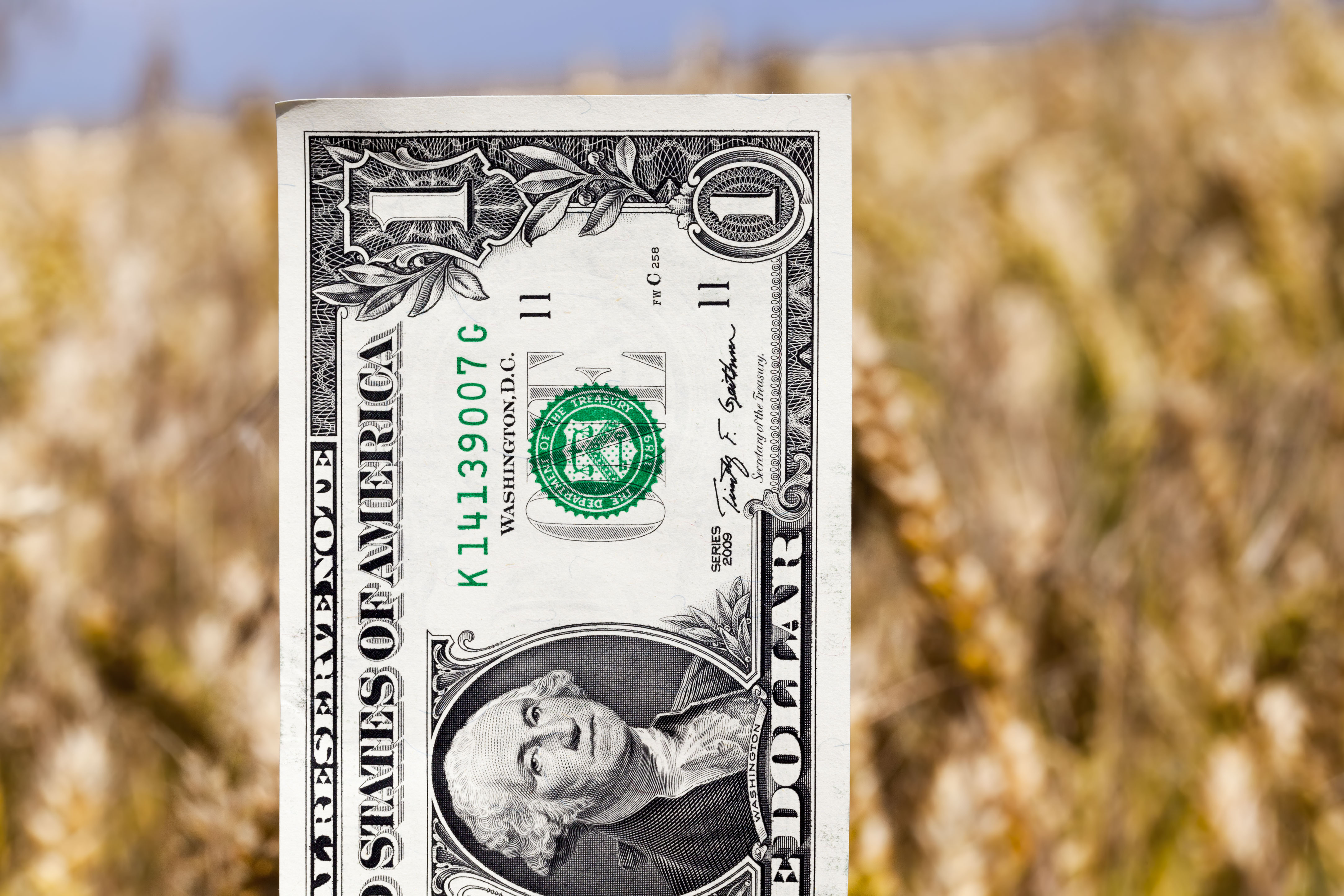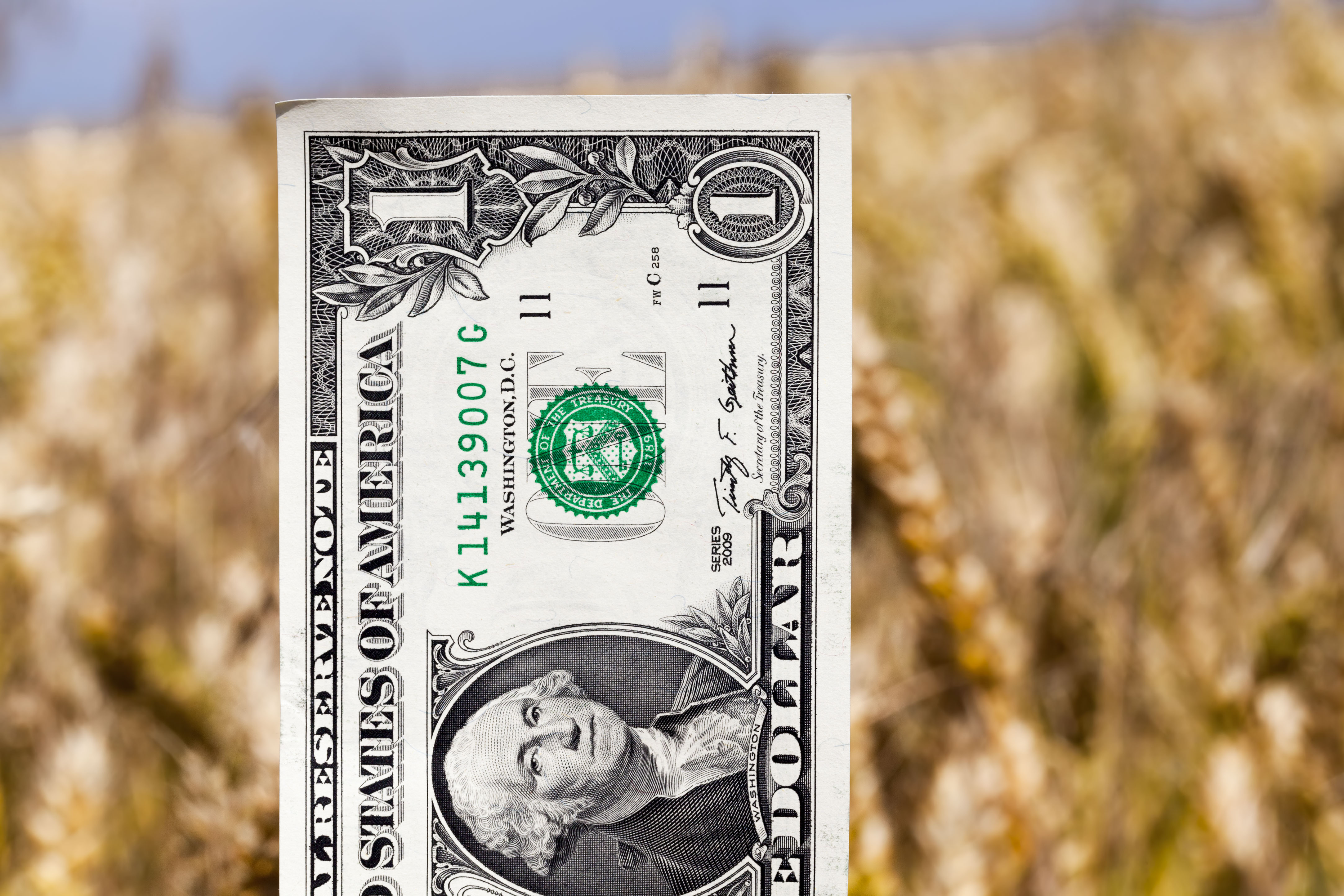
While futures prices represent 90% to 95% of the flat price of grain, don’t underestimate the value in the basis component. According to Chip Flory, Farm Journal economist, “Understanding basis is the easiest way for cash-only marketers and hedgers to improve their marketing performance.”
In the very simplest of terms, basis is the difference between local cash prices and the futures price at the CME:
Futures plus/minus basis = flat price (also called cash price)
Paid to the farmer (before quality premiums or discounts)
In reality, however, futures and basis trade independently, each with their own determining factors and historical relationships. Basis is far more than a mere difference between the futures price and a local price for physical grain.
Having a sense of how the basis portion of a local grain bid fits into the normal price range is the first step. To that end, building a basis history for a given destination is a good start for your ongoing analysis. It is as simple as collecting the basis for each of your primary delivery locations once a week. You can even run a simple line chart to better visualize the strength or weakness in each location’s basis.
As Chip Flory says so well, “Over time, you’ll see clear marketing signals from the basis analysis.”
Understanding the Causes of Basis Fluctuation
“Basis is influenced by several factors,” says Britany Wondercheck, Nebraska farmer and founder of the Farm Girl Next Door, a great educational resource on grain marketing. Those include
Transportation
“If you take your grain to a grain elevator, they still have to transport that via rail, barge, or truck to an end user or an export location, so they have to take that incurred cost into account.” This is factored into their basis price and is the largest portion of local basis values.
Buyers’ Costs
Grain buyers are in the business of buying grain and make their margin through resale to end-users when and where they need it. There are unavoidable costs associated with this.
• Storage costs: Similar to the costs a producer incurs storing grain on the farm, grain buyers have to figure in storage and interest costs.
• Handling costs: Labor, utilities, normal handling shrink, and some level for profit also factor into basis. The handling margin can increase quite a bit during harvest due to producer demand for an elevator’s space. For many elevators, this is the one time of year they can make a good profit on their available storage space.
Local Supply and Demand
Brittany says it well: “Basis is inherently localized. For example, if a large weather event decimated yields in your area and surrounding areas, basis levels may strengthen due to regional demand. This is an example of the big difference between futures and cash market influences. Basis might well improve when there’s a localized issue like this, but it’s unlikely futures prices will be impacted because it’s so small in terms of the national and global market,” she says.
Look at this example of how a corn basis is calculated. This is for a river terminal at Cincinnati, OH delivering corn to New Orleans in January 2022, using publicly available information on November 9, 2021.
Corn basis for CIF NOLA for January arrival is +$.67/bu (including cargo, insurance, and freight costs)
Barge freight for Ohio River for January is 375% of the base tariff rate, which is $4.69 per NT.
375% x $4.69 = $17.59/NT
$17.59/NT divided by 35.714 (bushels of corn per short ton) = $.4925 per bushel in barge freight costs.
+$.67 Corn Delivered NOLA (over March 22 corn futures)
($.49) in barge freight
($.08) storage/interest/handling costs
= +$.10 basis for January delivery to the Cincinnati terminal
Locking In the Basis vs. Leaving It Open
Over time, basis tends to trade in a normal range. For example, corn delivered New Orleans (or any destination you watch) less average freight, less an average handling cost by the elevator tends to relflect basis within normal seasonal levels.
Typically, the weakest basis is during periods of heavy grain movement, which occurs right after harvest. Buyers don’t have to work very hard to capture grain that is actively looking for a home. At other times, such as during spring fieldwork and planting, buyers have to incentivize farmers to sell and deliver grain to fill short-term needs, which they do by offering a strong basis.
When basis is stronger than normal, your marketing strategy should be to lock in the basis, but let the futures float until they return to better levels before setting your final price. On the flip side, when basis is weaker than normal, your strategy should be to lock in futures but let the basis float until it firms back up before setting basis and establishing the final price.
UnCommon Farms is dedicated to helping family farms survive market changes and thrive through future generations with expert training and support. Find out how we can help your farm business maximize your crop sales and get other tips for your farm’s success on our blog!



